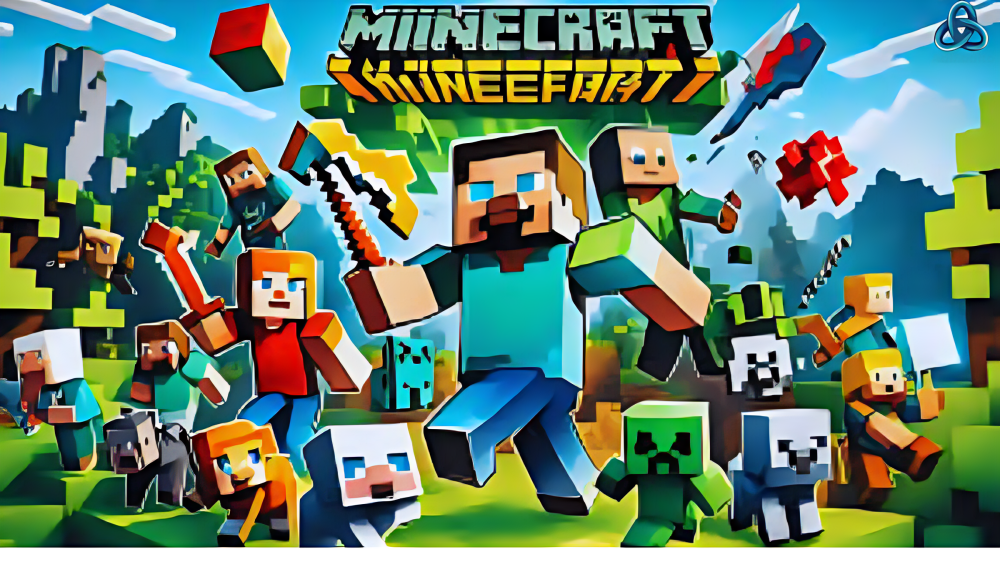The Evolution of Minecraft Icons
Since its inception in 2009, the visual minecraft (2009) game icons banners representation of the Minecraft game has undergone a remarkable evolution, particularly notable in its game icons. Initially, Minecraft’s game icons were simplistic, reflecting the early stage of development. With pixelated art and limited color palettes, these icons exemplified the minimalist aesthetic that has become a hallmark of the game. As the game gained popularity, the icons began to reflect the growing complexity and richness of the Minecraft universe, showcasing its expansion from a basic sandbox game to a diverse platform for minecraft (2009) game icons banners creativity and adventure.
The initial game icons served functional purposes, often representing items such as blocks, tools, and mobs in a straightforward manner. However, as the Minecraft community developed, so did the artistic expressions within the game. Updates brought about new features, and the icons started to incorporate more intricate designs. The transition from 8-bit styled graphics to more nuanced representations marked a significant shift in how players interacted with the game. Iconography became a language of its own, with recognizable symbols that enabled players to communicate gameplay strategies and share their creations easily.
Notable icons, such as the Creeper face and the diamond block, became instantly recognizable and are now associated with Minecraft in popular culture. These icons not only represent in-game elements but also signify a shared attachment within the community. The artistic choices behind these icons were influenced by various cultural aspects, from fellow indie games of the late 2000s to the overall rise in the popularity of pixel art. Consequently, the evolution of game icons effectively mirrors the broader narrative of Minecraft’s growth from a niche product to a global phenomenon, reflecting both technological advancements and diverse player preferences.
Designing Your Own Minecraft Banners
Creating personalized banners in the Minecraft (2009) game is an exciting way to express individuality and creativity within the game’s vast landscapes. minecraft (2009) game icons banners Minecraft banners serve not only as decorative elements but also as indicators of player identity and artistic preferences. The process of designing your own banners involves a combination of imagination, understanding of in-game mechanics, and the use of available tools.
To begin crafting a unique Minecraft banner, players can use the built-in crafting table or access the loom, which simplifies the process of applying patterns and colors. The loom allows players to utilize dyes derived from various in-game resources, enabling them to experiment with a range of vibrant hues. The sheer variety of colors provides a foundation for expressing personal style through bespoke designs. Furthermore, players can gain inspiration from existing Minecraft (2009) game icons banners, or by exploring online communities showcasing innovative designs.
For beginners looking to dive into the world of Minecraft banner design, a few tips can streamline the process. First, start with a simple pattern, using fundamental shapes or symbols that resonate with personal themes or interests. As skills improve, players can gradually incorporate more complex designs, patterns, and even logos that hold significance. Exploring various techniques, such as layering multiple designs or combining colors, enhances the visual impact of banners. Additionally, utilizing resources like Minecraft forums or tutorial videos can aid in learning new techniques and receiving feedback on designs.
In conclusion, the act of designing banners in Minecraft not only enriches the gaming experience but also encourages players to unleash their creativity. By minecraft (2009) game icons banners understanding the available tools and techniques, players can create stunning and meaningful banners that represent their journeys within the Minecraft world.
The Role of Banners in Minecraft Gameplay

Banners in the Minecraft (2009) game serve a multifaceted role that enhances both the aesthetic and functional aspects of gameplay. Primarily, banners function as decorative items that allow players to personalize their environments. By utilizing various designs and colors, players can express their creativity, thus transforming the game world into a unique representation of their individuality. The customization options available for banners empower users to create intricate patterns that can beautify their builds, making them an integral part of the building experience.
In addition to purely decorative purposes, banners play a critical role in team identification. In multiplayer environments, these distinctive icons serve as markers that signify alliance or group membership, fostering a sense of unity among players. For example, during PvP (Player vs. Player) encounters, banners can help distinguish between different factions, allowing players to quickly identify allies and opponents. This functionality enhances the strategic gameplay, minecraft (2009) game icons banners as players can coordinate with their teammates using banners to communicate their positions effectively.
The utility of banners extends beyond identification to encompass signaling and communication. Players often use banners as symbols for specific locations, goals, or objectives within the game. For instance, in cooperative modes such as Minecraft’s Bed Wars or Capture the Flag, banners can be placed strategically to indicate resource locations or zones of interest. This collective use not only benefits individual players but also promotes collaborations and social interactions among the Minecraft community. Players often exchange ideas, designs, and techniques for effective banner use, thus creating a shared culture around these visual elements.
In conclusion, the role of banners in Minecraft (2009) is significant, as they contribute to both decoration and communication, fostering collaborative gameplay and enhancing the overall experience for players.
The Community’s Love for Game Icons and Banners
The Minecraft (2009) game icons and banners represent a vibrant aspect of the gaming community’s creative expression. Players have embraced these elements, turning them into a form of art that enhances the game’s overall visual appeal. From server logos to individual player creations, these icons and banners serve as a means of personal identification within the expansive world of Minecraft.
This passion has spawned unique trends within the community, where users actively share their custom designs on various platforms such as Reddit, Discord, and dedicated Minecraft forums. These communities not only celebrate the game’s aesthetics but also offer a platform for aspiring designers to learn and grow. Many players participate in contests, minecraft (2009) game icons banners challenging each other to create the most impressive and innovative banners, further enriching the creative landscape.
Notable community members, such as graphic designers and YouTubers, have made significant contributions to this aspect of Minecraft (2009) culture. For example, popular content creators often provide tutorials and tips on designing icons and banners, motivating both novice and experienced players alike. One such designer, who goes by the alias “BannerWizard,” stated, “Creating banners in Minecraft is not just about aesthetics; it’s about telling a story and allowing others to connect with your individuality.”
The exchange of ideas and creations has resulted in a diverse array of designs, ensuring that no two banners are alike. The use of vibrant colors, intricate patterns, and thematic inspiration allows players to express not only their personalities but also their experiences within the game. As the fanbase continues to evolve, the need for unique representations remains paramount, solidifying the role of Minecraft game icons and banners as a cherished aspect of the community.

